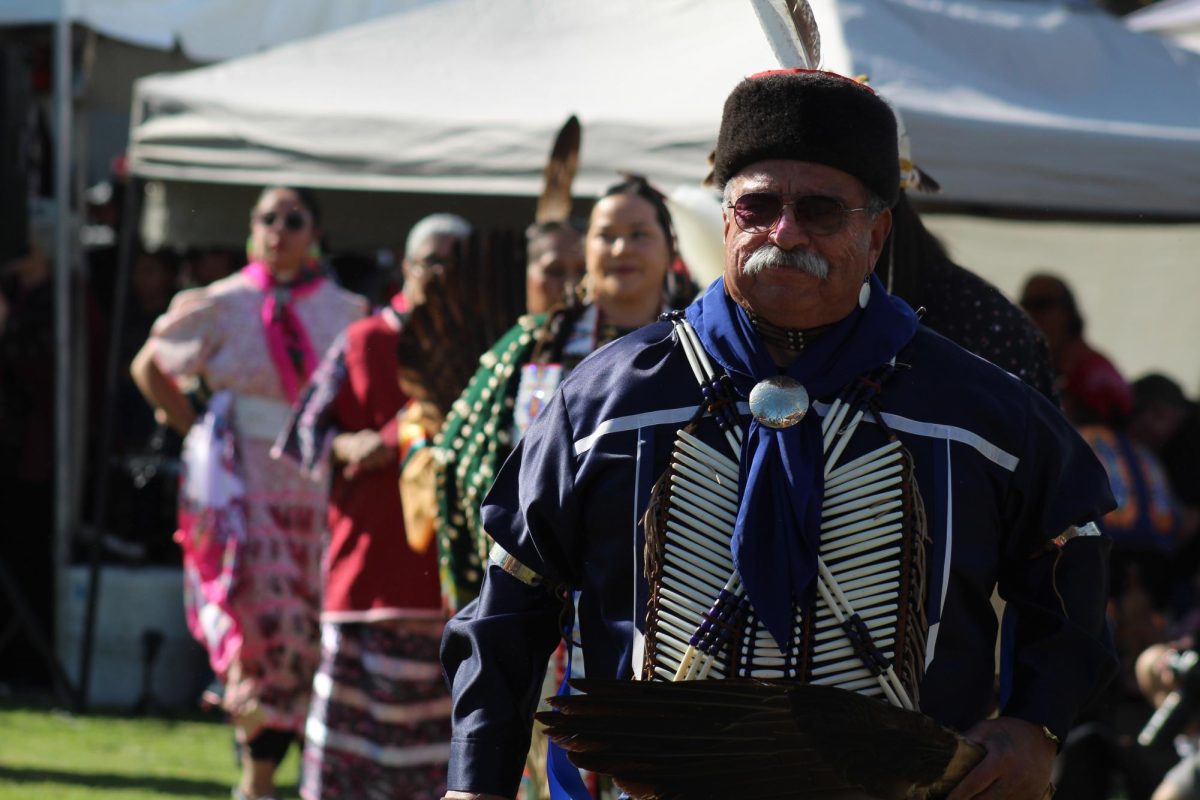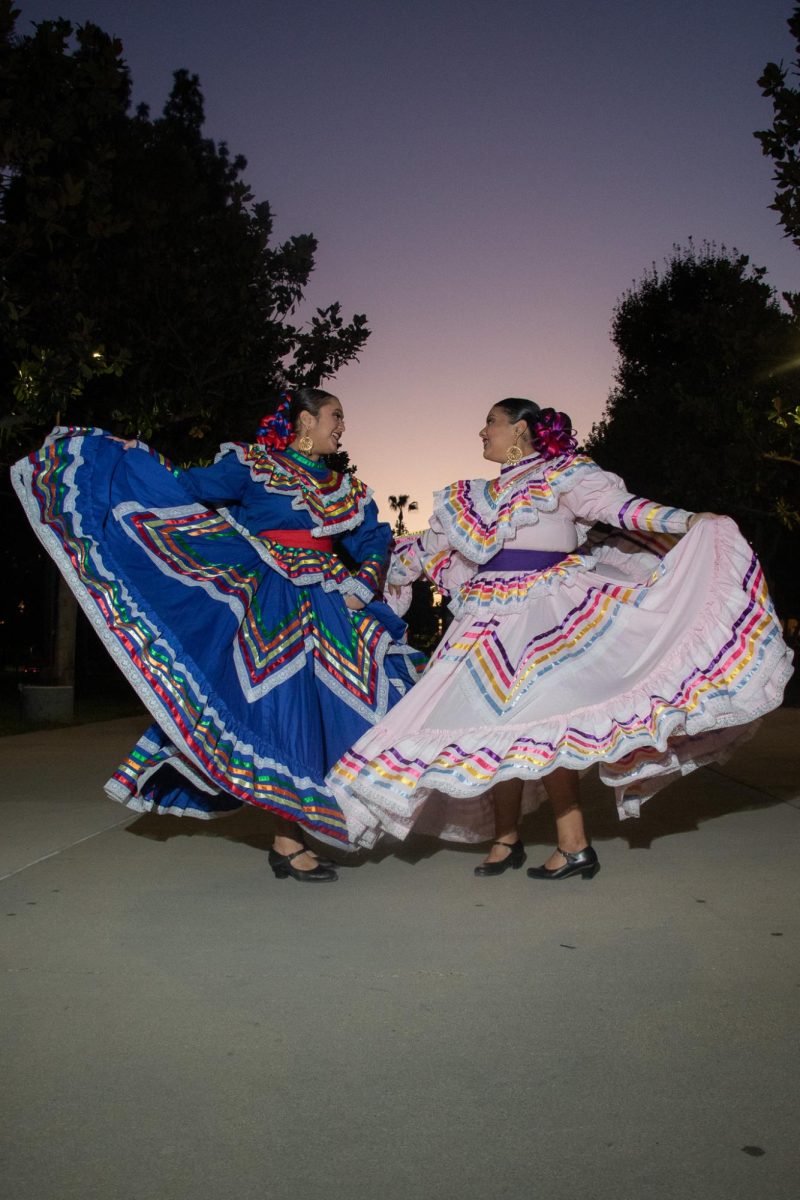“I’m alive. Are you alive?”
28-year-old Deena Roberts cried to her parents over the phone as she stood outside the rubble of her Northridge home, which was decimated by the 1994 earthquake, mirroring the damage CSUN’s campus had suffered mere blocks away. Exactly three decades later, she packs the only heirlooms salvaged from the remains of her home into a bag, wondering if they will be all she has once again.
As the Palisades, Eaton and Hughes fires ravaged Southern California, burning right through the 31st anniversary of the 1994 Northridge earthquake, survivors of wildfires and earthquakes alike bear the trauma brought about by natural disasters and their unpredictable, devastating nature.
“I suppose what I carry the most today is that loss,” Roberts said. “I had nothing left; [firefighters] red-tagged my house the moment they saw it.”
The destruction following the massive 6.7 earthquake, centered about a mile from CSUN, mirrors the apocalyptic decimation of the Pacific Palisades in the wake of the Palisades Fire, which broke out early in the morning on Jan. 7, 2025.

Roberts found out via phone call days after the earthquake that her place of work, a salon at the corner of Reseda Blvd. and Devonshire St., had “nothing to come back to.” More than 16,200 structures have been reduced to ash in the Palisades and Eaton fires across Los Angeles County, according to CAL FIRE.
In the aftermath of the earthquake, much of CSUN’s campus faced a similar fate. George Johnson, an equipment technician for the Cinema and Television Arts department, was hired partially by the Federal Emergency Management Agency (FEMA) to document the school’s destruction in the disaster’s trail.
Johnson recalled the devastation the campus faced. He documented entire buildings reduced to rubble, including the Fine Arts building that once stood where Johnson works today, in Manzanita Hall.
The wildfires continued during the anniversary of the 1994 earthquake, reigniting trauma for some and creating anew for others.
As the Palisades and Eaton fires leveled much of Los Angeles, CSUN issued emails to all students, offering financial support in the form of emergency grants and mental health support for any students affected by the disasters. Following the Hughes fire breaking out in Santa Clarita mid-day on Jan. 22, the same resources were emphasized.
“University Counseling Services is prepared to support any student experiencing emotional or psychological impacts from the trauma of the wildfires,” Provost Meera Komarraju stated in an email sent to all CSUN students on Jan. 14.
Dr. Julie Pearce, a licensed psychologist and director of University Counseling Services (UCS), highlighted the variety of ways trauma can impact one’s life following a natural disaster.
“[Trauma] can range from a wide variety of symptoms,” Dr. Pearce explained. “From feeling afraid or unsafe, especially for people who have been exposed to previous traumas or previous disasters, to PTSD symptoms of feeling very anxious or having panic attacks, having flashbacks, having trouble sleeping and perhaps even nightmares. There’s no right feeling. There’s just a wide range of feelings that someone might experience.”
There are several ways one can help reduce these feelings of distress and unrest caused by natural disasters, one of those being through social support. Dr. Pearce detailed the importance of reaching out to one’s support system, whether that is friends, family, community or even religious or spiritual organizations.
“Social support is so crucial in the face of a disaster or a trauma,” Dr. Pearce said. “Students can come here to University Counseling Services. We offer a range of free services and we also have 24/7 crisis and urgent care services because one can not always predict when they’re going to feel overwhelmed by emotion. I want students to know that day or night, they can reach out and speak to a crisis counselor here.”
Dr. Pearce also explained that taking care of yourself is of utmost importance in the wake of a disaster such as the 1994 earthquake or the recent wildfires. Eating meals as regularly as possible, getting adequate rest and even limiting news consumption when it is anxiety-inducing are all crucial to experiencing and working through trauma.
Roberts looked back on the support system she had following the 1994 disaster, noting how that lack of support affected the way she acts today.
“For so long, I couldn’t drive under freeway overpasses, I just thought at any point they could come crumbling down again,” Roberts said. “For years after, I always had a bag packed, just in case. I think that’s what still gives me so much anxiety, the thought that I could lose everything I have again.”
According to Johnson, the unpredictable nature of natural disasters plays a key role in the damage they inflict on buildings and the lives of those affected.
“Fires, earthquakes, it’s all the same thing after. Just trying to learn so that hopefully the next one that happens is less [damaging],” said Johnson.
Trauma can take time to work through, especially in the aftermath of a disaster. According to the American Psychological Association, trauma from natural disasters can be emotionally taxing and often requires recognition and understanding to overcome.
“There’s an organization called the Trauma Resource Institute, and they have an app that you can download on your phone or use on their website called ‘iChill,’” Dr. Pearce said. “It has six different wellness skills you can utilize and learn that can help you in terms of grounding yourself and focusing on the physiological responses we can experience as a result of a disaster or trauma. I would highly recommend that as an option.”
From leaning on social support from family and friends, taking advantage of free apps such as TRI’s “iChill” app, short-term counseling, psychiatric services and crisis/urgent care services, healthy coping mechanisms in the face of natural disasters are key to success and healing.
In the face of natural disasters, healthy coping strategies—such as community support, support services, and free wellness apps—are crucial for recovery and success after a natural disaster.









